 “Fawn” stars Jessica Gunning and Richard Gadd Photo: Getty
“Fawn” stars Jessica Gunning and Richard Gadd Photo: Getty
«This is a true story.» That statement, featured early in the Netflix drama Little Fawn, may have become one of the most expensive own goals in television history. Fiona Harvey, who claims to be the model for Martha's obsessive stalker in the show, is suing the streaming company for $170 million (£133 million), citing «libel, intentional infliction of emotional distress, negligence, gross negligence and infringement of her rights.» right to publicity.»
Since she gave up anonymity in the most public of fashion magazines to appear on Piers Morgan's show to discuss the series, Harvey has denied that the character owes anything to reality, instead suggesting that it nothing more than the overactive imagination of creator Richard Gadd.
Gadd, who initially insisted that the show was essentially a factual documentary (hence the opening statement), has now pushed back slightly, saying in April that events had been «changed slightly to create dramatic climaxes.»
“It’s very emotionally true, obviously,” he said. “I was brutally persecuted and brutally abused. But we wanted it to exist in the arts and also protect the people it's based on.» Some of these fabrications and embellishments included the suggestion that Harvey, like Martha, was imprisoned (she was not) and that she brutally attacked Gadd's then-girlfriend in a fit of anger and frustration.
The lawsuit filed against the streaming company states: “The lies [Netflix] told about Harvey to more than 50 million people around the world include that Harvey is a twice-convicted stalker sentenced to five years in prison, and that Harvey sexually assaulted Gadd. The defendants told these lies and didn’t stop because it was a better story than the truth, and the best stories made money.”
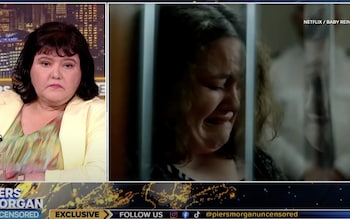 Fiona Harvey, the alleged deer stalker, appears in Piers Morgan Uncensored
Fiona Harvey, the alleged deer stalker, appears in Piers Morgan Uncensored
There is some truth to this, as is the subsequent statement that “Netflix, the billion-dollar multinational entertainment streaming company, has done literally nothing to confirm the “true story” Gadd told. That is, he never investigated whether Harvey was convicted, which is a very serious misrepresentation. It didn't help to understand the relationship between Gadd and Harvey, if there was one at all… As a result of [Netflix's] lies, malfeasance, and completely reckless misconduct, Harvey's life was ruined. Netflix and Gadd just destroyed her reputation, her character and her life.”
The issue of protection and fact-checking, which would mean that a company such as the BBC would never broadcast Baby Reindeer in its current form without first thoroughly investigating, will undoubtedly now be a major talking point in whatever legal case it may be. Exodus. However, if the show had used the standard «based on a true story» disclaimer instead of so boldly declaring it to be verifiable truth, it would have been significantly more difficult to accuse Netflix and Gadd of present the story of Martha and Harvey as anything else. than fictional.
The streaming company can afford the best lawyers on the planet, and the case could very well fail before it even begins, or, conversely, be settled long before it reaches trial. But it does raise an interesting and important question: what does a disclaimer actually do from a legal perspective? And when did they become a necessity in an industry that has long been synonymous with playing fast and loose with the truth — and how did creative and mischievous people manage to subvert the often formulaic formulations usually foisted upon filmmakers by cautious studios and producers?
'Some characters are still alive, the rest met a violent death'
The charismatic but dangerous Rasputin — the so-called «mad monk» — was killed in 1916 when Russian aristocrats, fearful of his influence over Russian Emperor Nicholas II and his wife Alexandra, killed him. Their leader, Prince Felix Yusupov, was exiled rather than executed, and so he was alive—though now penniless—16 years later when the first Hollywood account of Rasputin's death, the 1932 MGM film Rasputin and the Empress, was released.
Yusupov objected to his portrayal as «Prince Pavel Chegodiev», but given that he had written his own memoirs about his participation in Rasputin's assassination, Lost Splendor, he could hardly complain. However, it was his wife Irina who was able to claim that her reputation was ruined given that Rasputin portrays her as being raped and manipulated under the guise of «Princess Natasha».
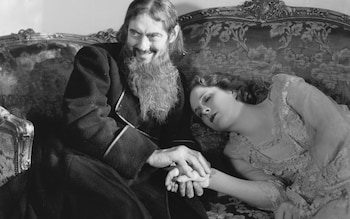 Lionel Barrymore and Anne Shirley in the film «Rasputin and the Empress» Photo: Moviepix
Lionel Barrymore and Anne Shirley in the film «Rasputin and the Empress» Photo: Moviepix
The two never actually met, and although MGM knew this during the film's production, they kept the lie in the film, which they actively promoted as a true story, stating: «It's about the destruction of an empire… Some of these characters are still alive — the rest met death with a violent death.” Irina sued MGM and won $125,000 and the removal of the offending scene, and the film was withdrawn from circulation for decades to come.
She also made sure that from this point on, even impeccably historically accurate biopics contained a description that the films were not intended to be realistic portrayals of characters or events: a state of affairs suggested by the judge who ruled against MGM in court. a matter that would, unwittingly, lead to the disclaimer of “all persons are fictitious,” as it was known.
“Any resemblance between the characters and any persons, living or dead, is a miracle.”
The standard formulation, which was regularly used in Hollywood films for decades afterwards, was: “The characters and events depicted in this film are entirely fictitious and any resemblance to names or events is entirely coincidental.” This may have satisfied both lawyers and studios, but it didn't mean creatives couldn't have fun with the tradition. Back in 1940, the Three Stooges war comedy You Dirty Spy! could have declared that «Any resemblance between the characters in this picture and any persons, living or dead, is a miracle,» just as the subversive 1941 meta-comedy Hellzapoppin hinted at its own silliness in its opening statement that «any resemblance between Hellzapoppin» and the movie is purely coincidental.»
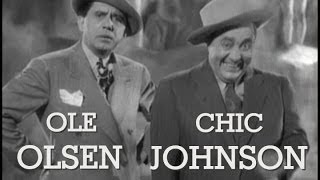
However, as with many things, Charlie Chaplin did it best in his anti-war satire «The Great Dictator» of the 1940s, with a subtitle that read: «Any resemblance between the dictator Hynkel and the Jewish barber is purely coincidental.» Thus, further similarities with other prominent European dictators could only be speculated.
“Safety measures will prevent the occurrence of events such as those depicted in this film.”
If comedy was the first to seize the opportunity to make the disclaimer a subject of mild ridicule, other genres were equally adept at exploiting its potential for their own purposes. Thus the completely straightforward 1943 horror film I Walked with a Zombie featured in its opening titles the disclaimer that «any resemblance to any persons, living, dead OR ACTIVE, is entirely coincidental» — an opportunity for a nervous audience to laugh. before the chills and fear began in earnest.
 Slim Pickens in the movie «Dr. Strangelove» Photo: AP
Slim Pickens in the movie «Dr. Strangelove» Photo: AP
There's also Stanley Kubrick's seminal 1964 Cold War satire Dr. Strangelove, which began life as a serious study of nuclear war until Kubrick decided the story was so horrific it could only be considered a black comedy. The tongue-in-cheek disclaimer stated, “It is the stated position of the United States Air Force that its security measures will prevent the occurrence of events such as those depicted in this film.” This is undoubtedly a huge relief in every way.
“Most of what is stated below is true”
By 1969, the trope was well known enough for the (deliberately) inaccurate and glamorous western Butch Cassidy and the Sundance Kid to state «Most of what follows is true» in its opening disclaimer. The film's screenwriter, William Goldman, enjoyed a career in which he often played fast and loose with ideas of fiction versus documentary reality, arguing that his 1987 romantic fantasy comedy The Princess Bride was based on a novel by the fictional S. Morgenstern even as he was writing about such real-life characters as Charlie Chaplin and lion hunter John Henry Patterson.
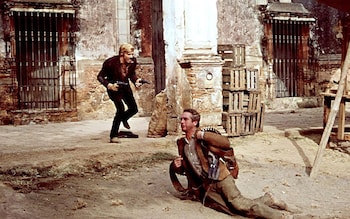 Robert Redford and Paul Newman in Butch Cassidy and the Sundance Kid Photo: Rex
Robert Redford and Paul Newman in Butch Cassidy and the Sundance Kid Photo: Rex
His most famous foray into biopics was 1976's All the President's Men, about the Watergate scandal. Mindful that the events depicted were so recent in history that any invention would have been seized upon by its detractors and used to cast doubt on the film's accuracy, Goldman tried to keep the film as accurate as possible, even though its most famous line “Follow the money” was his own invention.
“I would like to thank Joey LaMotta, even though he is suing us.”
Despite (or perhaps because of) the controversy over the Rasputin film, biopics continued to make up the bulk of Hollywood's output over the following decades—as they certainly do today. However, given that it was now necessary to pretend that these films, which dealt with real characters and events, were also creative works of fiction, there was an inevitable silliness and cover-up involved; The 1980 Jake LaMotta biopic Raging Bull, for example, thanked LaMotta for his work as a technical consultant and cited his biography as the film's source material before, hilariously, declaring that he was a fictional invention.
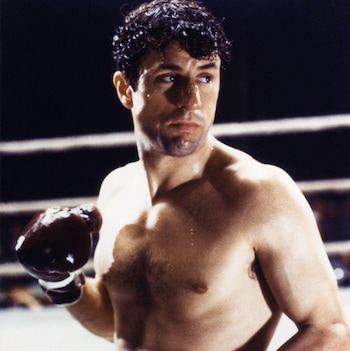 Robert De Niro in the film «Raging Bull» Photo: Alamy
Robert De Niro in the film «Raging Bull» Photo: Alamy
This may lead to further complications. LaMotta was unimpressed with his on-screen performance, stating, «I didn't particularly like the movie. For the first time I thought, Oh my God, am I beating my brother and doing all this stuff?” His brother Joey, played by Joe Pesci in the film, even considered legal action, prompting Robert De Niro, who won an Oscar for his portrayal of Jake, to joke: “[I'd like to thank] Joey LaMotta, even though he's suing us in court. I hope this gets sorted out soon and I can go to his house and eat sometimes.”
«Just a pretty face without any singing or acting ability»
The disclaimer was considered to be an ironclad reference, but there were still cases where it did not stand up to criticism. A great example of this is the now forgotten 1980 musical drama The Idolmaker, which is best known as the directorial debut of An Officer and a Gentleman's Taylor Hackford. The film subverted the A Star Is Born template by revolving around a cynical and unscrupulous promoter who takes an unremarkable young man and turns him into a music idol, and it didn't sit well with Fabian Forte, a former fifties heartthrob who claimed the picture was his likeness, and , furthermore, presented him as «a completely fabricated singer, just a pretty face without any singing ability or acting talent.»

It would be easier to deny this if Forte's former manager, Bob Marcucci, wasn't involved in the film's production. Forte ultimately received almost 10 percent of the film's profits.
“All celebrity voices are faked… bad”
It could be argued that the disclaimer was never taken seriously, but over time, filmmakers began to ridicule it even more openly. In the 1980s film An American Werewolf in London, John Landis stated that the film did not depict «the living, the dead or the undead,» and the 1985 zombie picture Return of the Living Dead offered an ironic subversion by declaring that «Everyone The events depicted in this film are true. The names are real names of real people and real organizations.”
 Tom Cruise in South Park
Tom Cruise in South Park
Perhaps this reached its apotheosis in the glory of South Park, which began in 1997 with the disclaimer that “All characters and events in this series – even those based on real people – are entirely fictitious. All celebrity voices are imitated… poorly.” And another good laugh can be had from Leslie Nielsen’s terrible comedy Mr. Magoo from the same year, which derives its intended humor from its protagonist’s poor judgment, and then has the audacity to say in the end credits that “The preceding film is not intended as an accurate depiction of blindness or low vision.” That moment is significantly funnier than the entire preceding 90 minutes.
“The views expressed in this commentary do not reflect the views of the studio.”
When DVDs (and later Blu-Rays) temporarily became the savior of the home video industry in the early 2000s, one of their most valuable features (and indeed one that is sorely missed by filmmakers today) was the cast and crew commentary track. Instead of the carefully edited and PR-honed interviews that were often compiled from a film's electronic press kit, the commentary could often consist of riotous, salacious stories about the making of the film, or, if several years had passed, could consist of the directors or stars cheerfully making fun of a terrible film, in which they were filming. (Joel Schumacher's discussion of Batman and Robin is a prime example.)
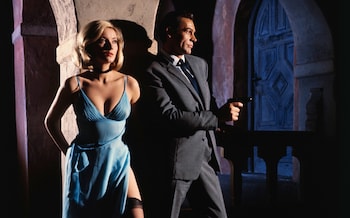 Sean Connery and Daniela Bianchi in From Russia with Love » Photo: Bettmann
Sean Connery and Daniela Bianchi in From Russia with Love » Photo: Bettmann
The suspicion remains that very few studio executives ever bothered to listen to these comments (hence the often amazing stories contained within them) and thus they contained a vague, catch-all statement that «The views expressed on this commentary are solely filmmakers and do not reflect the views of the studio.» However, it was the DVD's predecessor, Laserdisc, that caused the biggest controversy in this regard, when commentaries on the first three James Bond films had to be banned in response to an outraged response from Bond's production company Eon, which provided no fewer than 185 statements. that were «inaccurate, insensitive, inflammatory or potentially libelous.»
These included discussions about how Sean Connery gained weight while filming From Russia with Love, an allegation that several actresses were cast solely for their looks rather than their acting abilities, and the director of Dr. No. Terence Young on his accidentally dyed hair: «I'm not a fagot and I don't usually act like that.» No disclaimer will be sufficient to cover this level of wrongdoing.
“This fictional dramatization tells the story of Queen Elizabeth II”
The debate over whether Netflix's award-winning show The Crown was brilliantly daring television that lived up to its artistic inventions, or just a lascivious soap opera in which everything was made up almost at random, continued even after the series ended. However, as we get closer to the present moment, attention has undoubtedly focused on events that many people might remember as having taken place during their lifetime, meaning that screenwriter Peter Morgan's inventions stood out even more.
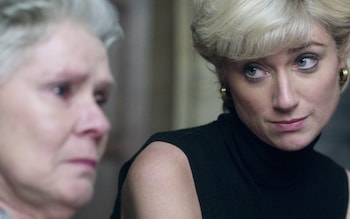 Imelda Staunton and Elizabeth Debicki in The Crown Photo: Netflix
Imelda Staunton and Elizabeth Debicki in The Crown Photo: Netflix
For the fifth season, in response to universal protest from Sir John Major to Dame Judi Dench, Netflix added a disclaimer to the series' advertising (though not in the episodes themselves), stating that «Inspired by true events, this fictional dramatization tells the story of Queen Elizabeth II, as well as the political and the personal events that shaped her reign.» It did little to stop the criticism, but at least it was a gesture in the right direction — something Netflix may have remembered a few years later with Baby Reindeer.













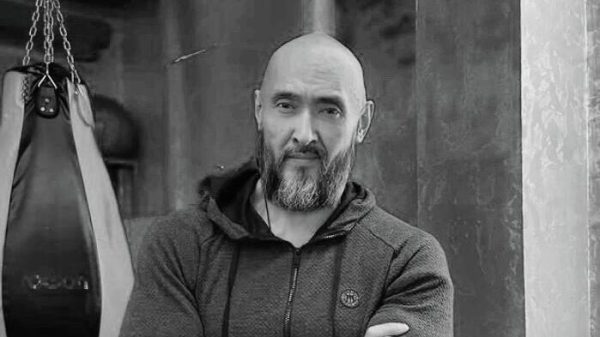












































Свежие комментарии